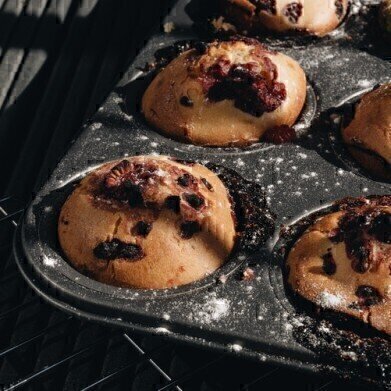GC-MS
What Makes the Best Muffins? - Chromatography Explores
Nov 11 2020
Muffins are a staple food found in supermarkets, bakeries, and coffee shops. They are eaten the world over and are appreciated for their texture and taste. They are relatively easy to make containing simple ingredients like flour, sugar, milk, fat, and eggs along with a leavening ingredient that helps to promote the baking process.
A recent paper published in the journal Foods titled Formulation of New Baking (+)-Catechin Based Leavening Agents: Effects on Rheology, Sensory and Antioxidant Features during Muffin Preparation reports on how scientists in Italy might have found a way to make muffins even more scrumptious. Let’s look at what they did and see how chromatography could help make an already delicious cake even better.
It is all in the gas produced
There re many factors that affect the baking process. Quality of ingredients, proportion of ingredients, how they are handled, time and temperature, and how they are baked are all important. But if the best leavening agent is not used, then all the rest can amount to futile gestures towards making a great muffin.
Leavening agents are used to help create the structure in baked foods. They can also affect the texture of the products. They work by releasing a gas and allowing the gas to expand as the result of a chemical reaction or they can act as the seed of nucleation for gas formation. When these gas pockets are heated, they expand or release steam depending on the leavening agent and process utilised in the formulation. This gas expansion helps to create the crumb and texture of baked goods, including muffins.
Nice crumb, shame about the taste
In the study carried out by scientists in Italy, two different formulations for possible leavening agents were used. Both used (+)-catechin, but one was mixed with tartaric acid and one with mucic acid. The dough and the muffins produced from the dough were analysed using various techniques including gas chromatography. The use of chromatography to analyse food samples is widespread due to chromatography’s power to separate compounds from mixtures. An example is discussed in the article, Selective and Robust UHPLC-MS/MS Assay for the Determination of Acrylamide Levels in Food Samples.
The use of catechin improved the antioxidant properties of the muffins. And indeed, textural analysis suggested that the muffins using the new leavening agent were improved. However, the new leavening ingredients produced muffins with an inferior taste compared to control muffins. So, better crumb but worse taste. Still, it gives the researchers something to work with and could make muffins with antioxidant properties too
Digital Edition
Chromatography Today - Buyers' Guide 2022
October 2023
In This Edition Modern & Practical Applications - Accelerating ADC Development with Mass Spectrometry - Implementing High-Resolution Ion Mobility into Peptide Mapping Workflows Chromatogr...
View all digital editions
Events
ACS National Meeting - Fall 2024
Aug 18 2024 Denver, CO, USA
Sep 04 2024 Chiba, Tokyo, Japan
Sep 04 2024 University of Warwick, Coventry, UK
Sep 10 2024 Rockville, MD, USA
Plastics Recycling World Expo Europe
Sep 11 2024 Brussels, Belgium














